What can the Indian Super League learn from its Asian counterparts?

The Indian Super League (ISL) started 10 years ago with hopes of emulating the success of the Indian Premier League (IPL) in cricket.
However, it has not had the wide-ranging impact it intended in order to lift Indian football out of its quagmire.
India, the 1952 Asian Games champion, is now ranked 126th, its lowest in seven years. Despite having a league structure with 13 teams and no relegation, Indian football has failed to rise up the Asian standings.
Forgettable form: India, which was the defending Intercontinental Cup champion, lost the title to Syria, with its rank falling two further spots to 126 in the latest rankings.
| Photo Credit:
Nagara Gopal/The Hindu
Forgettable form: India, which was the defending Intercontinental Cup champion, lost the title to Syria, with its rank falling two further spots to 126 in the latest rankings.
| Photo Credit:
Nagara Gopal/The Hindu
“I’m very optimistic about this season for FC Goa, but I’m not very optimistic about the continuity of the ISL. This is my feeling — changing 14-15 players is not a problem for the players or the coach, but it is a problem within the system. We can speak 1,000 hours about it,” said a pragmatic Manolo Marquez, head coach of the Indian men’s national team, in a recent interview.
So, how can Indian football learn and grow beyond its leagues? Perhaps some of its Asian counterparts may present an answer.
The ISL is a market worth Rs 467 crores, ranking 12th among the 17 Asian countries (whose data is available) that are ranked above India in the current FIFA rankings.
RELATED: Most angry I have been since I first arrived in India in 2020, says Manolo Marquez
It has attracted global superstars such as Roberto Carlos and Alessandro Del Piero, though they joined the league well past their prime to help boost its popularity.
Recently, players with more current international exposure have joined the ISL, such as Joni Kauko, who won the UEFA Nations League C with Finland while playing for Mohun Bagan Super Giant, or Jason Cummings (Australia), who joined the same team after playing in the FIFA World Cup 2022.
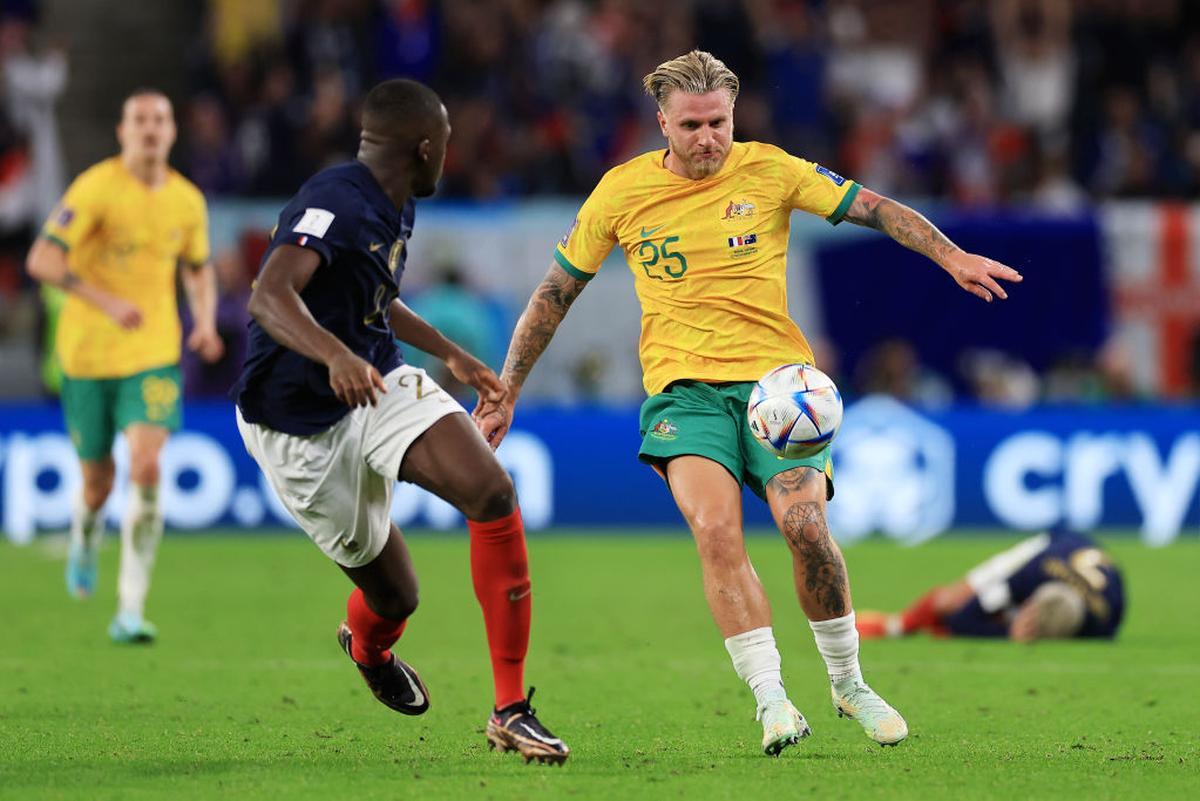
Bringing World Cup experience to the table: Jason Cummings in action for Australia during the FIFA World Cup 2022, against France, at Al Janoub Stadium in Qatar.
| Photo Credit:
Getty Images
Bringing World Cup experience to the table: Jason Cummings in action for Australia during the FIFA World Cup 2022, against France, at Al Janoub Stadium in Qatar.
| Photo Credit:
Getty Images
However, the opposite has rarely happened, and just twice during the ISL era.
Sunil Chhetri, India’s all-time top scorer and the highest scorer in the league, played for Kansas City in Major League Soccer in 2010, while Gurpreet Singh Sandhu made just 11 appearances for Stabaek between 2014 and 2017.
Sandesh Jhingan, after moving to Croatian first-division side HNK Sibenik in 2021, failed to find any game time before returning to India.
In the ISL era, FC Goa’s current player Jay Gupta developed at the now-defunct FC Pune City before moving to Portugal in 2019, where he played for the reserve sides of GDS Cascais and G.D. Estoril Praia, followed by a brief stint with Spanish side Ebre Escola Esportiva.
In all four cases, the movement was to Europe instead of Asia — a move that eventually saw them return after limited or no game time.
“My feeling is that Indian players are very comfortable. Life is very good for them in the ISL, and it is difficult for them to try and go abroad,” Marquez said in his first press conference as India coach.
“You grow when you play abroad. I’m not talking about the top level, like the Premier League or La Liga. But if you go abroad and play against opponents who are better than you, you will improve.”
The Japan effect
Japan, the highest-ranked Asian country in FIFA, has been a trailblazer in football league management and youth development.
Its 100-year plan, initiated in 1992, has yielded results both on and off the field, with Asian countries such as Vietnam and Thailand fully embracing the Japanese philosophy.
Thailand has seen some of its national team players — Supachok Sarachat, Sarach Yooyen, and Ekanit Panya — ply their trade in Japan, while some Japanese coaches have taken up jobs in Thailand’s top division.
J1 League side Kashima Antlers’ former head coach Masatada Ishii currently manages the Thai national team and helped it secure a knockout spot at the AFC Asian Cup in Qatar earlier this year.
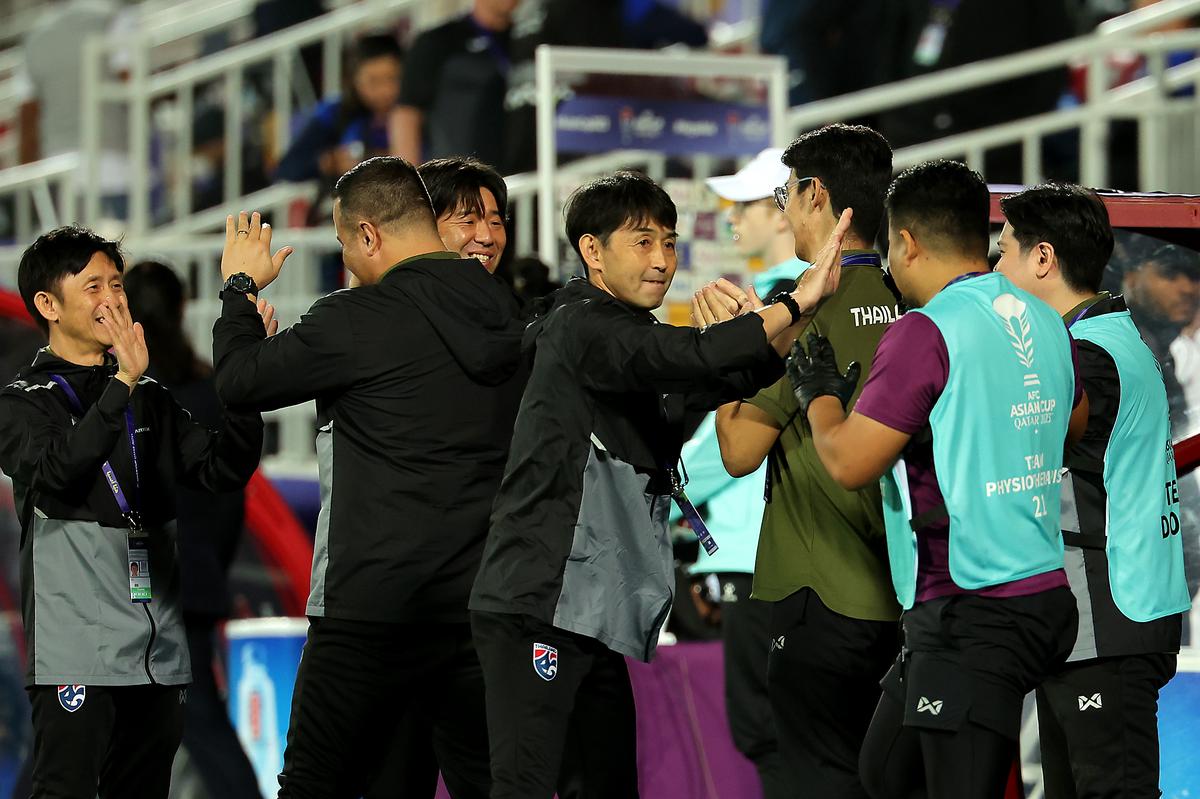
Job done and dusted: Masatada Ishii, Head Coach of Thailand celebrates after his team secured a knockout spot in the AFC Asian Cup 2023 in Doha, Qatar.
| Photo Credit:
Getty Images
Job done and dusted: Masatada Ishii, Head Coach of Thailand celebrates after his team secured a knockout spot in the AFC Asian Cup 2023 in Doha, Qatar.
| Photo Credit:
Getty Images
Ishii was previously the head coach of Buriram United, while Makoto Teguramori is the other Japanese coach in the league, in charge of BG Pathum United.
Financially, Thai League 1 is better off than the ISL, valued at Rs 598 crores.
Vietnam, on the other hand, has set an example by learning from Asian leaders, Japan and South Korea, despite having a league valued lower than the ISL.
In the last six years, its under-23 side finished as runner-up in the 2018 Asian Cup, clinched consecutive AFF (ASEAN Football Federation) Championship titles (2022, 2023), and won consecutive gold medals at the Southeast Asian Games (2019, 2021).
ALSO READ: Celtic, the Indian juggler and Mohammedan Sporting: Scot Coyle remembers Salim before Chennaiyin’s first home game
Meanwhile, the senior team won the AFF Championship once (in 2018) and finished as runner-up in the tournament in 2022.
Vietnam’s domestic league is valued at over Rs 100 crores less than the ISL, at Rs 367 crores. Additionally, its reliance on foreign players is much lower than India’s, approximately 26 per cent.
The secret to its success lies in the Memorandum of Understanding with Japan, signed in 2014, and its reliance on South Korean coaches who have first-hand knowledge of how the game is played in this part of the world.
Over the past decade, J1 League (Japan’s top flight) side Vissel Kobe’s former coach Miura Toshiya has managed Vietnam’s U23 and the senior national team.
Moreover, Japanese football experts like Tanabe Kazuyoshi have worked as the executive director of the V. League, while Yusuke Adachi and Takeshi Koshida have served as technical directors of the Vietnam Football Federation.
Coaching the South Korean way
According to the study, ‘Coach Leadership Style and Korean Professional Soccer Team Performance: Collective Efficacy as a Mediator’, the transformational and authentic leadership of head coaches had a positive effect on team performance.
Park Hang-seo, a former head coach in the K1 League (with Sangju Sangmu) and of the South Korean under-23 team, became one of the most successful coaches in Vietnam’s football history, winning the 2019 and 2021 SEA Games with the under-23 side and the AFF Championship (2018) with the senior team.
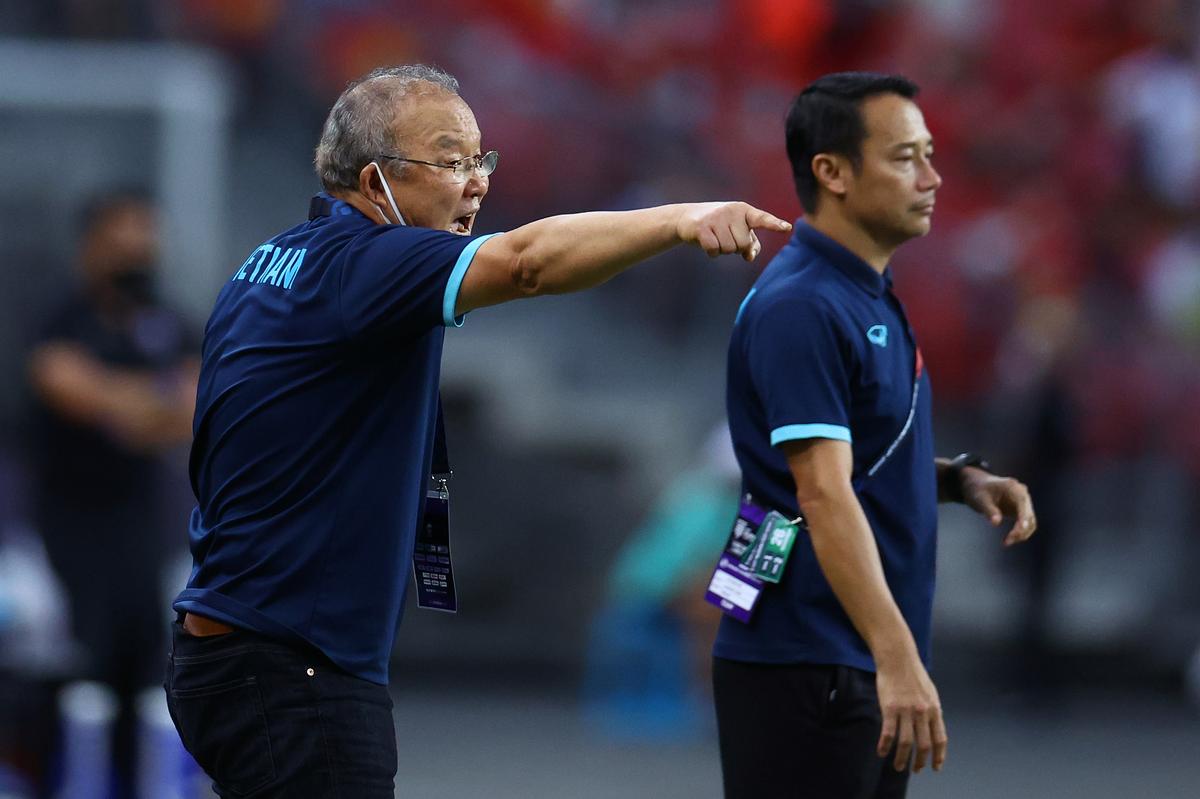
Enviable record: Park Hang-seo (left) became one of the most successful coaches in Vietnam’s football history, winning the 2019 and 2021 SEA Games with the under-23 side and the AFF Championship (2018) with the senior team.
| Photo Credit:
Getty Images
Enviable record: Park Hang-seo (left) became one of the most successful coaches in Vietnam’s football history, winning the 2019 and 2021 SEA Games with the under-23 side and the AFF Championship (2018) with the senior team.
| Photo Credit:
Getty Images
Hang-seo, who left the Vietnam job in January 2023, was also one of the candidates in contention for the Indian national team’s head coach position before Marquez filled the role.
Hang-seo was not the only South Korean coach to attract attention.
Former South Korean international Shin Tae-yong guided Indonesia into the knockouts of the AFC Asian Cup 2023 for the first time and reached the final of the AFF Championship 2020, having taken over the team earlier that year.
With the under-23 side, he won a silver medal in the AFF U-23 Championship and a bronze medal at the SEA Games in 2021.
ALSO READ: Champion mentality missing in current players, says Indian football doyen Syed Nayeemuddin reflecting on his ‘Golden Era’
Meanwhile, compatriot Kim Pan-gon helped Malaysia qualify for the AFC Asian Cup on merit after 42 years, taking charge of the side in 2022. He also led Malaysia to a draw against South Korea, earning the team its first point in the tournament since 1980.
Such has been the demand for South Korean coaches that when Vietnam grew frustrated with French head coach Philippe Troussier, it turned to another South Korean, Kim Sang-sik, to find its footing again.
A lesson from Asia’s elite
Australia and Uzbekistan are the only two nations in Asia’s top 10 whose top-tier league market values are relatively close to India’s league valuation.
However, both countries have made their respective marks on the international stage in different ways.
The Socceroos are known for bringing in players from other nations to represent them in competitions, leveraging their Australian lineage.
Among the 26 players who were part of the team that reached the 2022 FIFA World Cup round of 16 in Qatar, eight were not Australian natives.
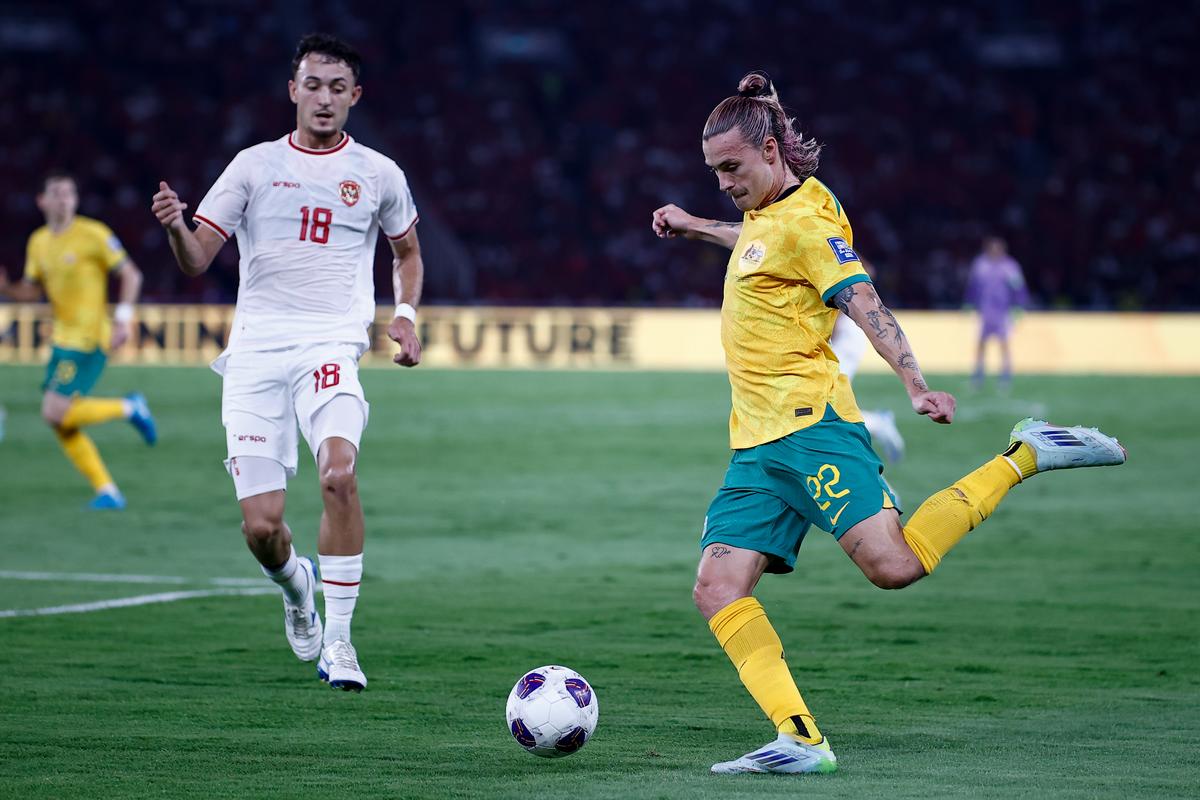
Foreign import? Jackson Irvine, who has also led Australia, is a National team regular, but he has previously played for Scotland’s under-19 side. However, he switched allegiances to the Socceroos as his mother is Australian.
| Photo Credit:
Getty Images
Foreign import? Jackson Irvine, who has also led Australia, is a National team regular, but he has previously played for Scotland’s under-19 side. However, he switched allegiances to the Socceroos as his mother is Australian.
| Photo Credit:
Getty Images
At present, six of the 25 players involved in the FIFA World Cup 2026 qualifiers were born in other countries and brought up through Australia’s club system.
For instance, Tanzania-born Nestory Irankunda, who came through the ranks of A-League side Adelaide United, was signed by German giant Bayern Munich on a long-term contract starting in July 2024.
Uzbekistan, on the other hand, has focused on identifying and honing talent through age-group competitions, leading to a lower reliance on foreigners in their leagues — 18.9 per cent compared to 20.7 per cent in the ISL this season.
Additionally, the average age of their club squads (25.4 years) is lower than that in the ISL (26.2 years).
Uzbekistan has qualified for three FIFA Under-17 World Cups (2011, 2013, and 2023), making the knockouts each time.
Its Under-20 team is the reigning Asian champion, while the Under-23 side secured a bronze medal at the latest Asian Games in Hangzhou.
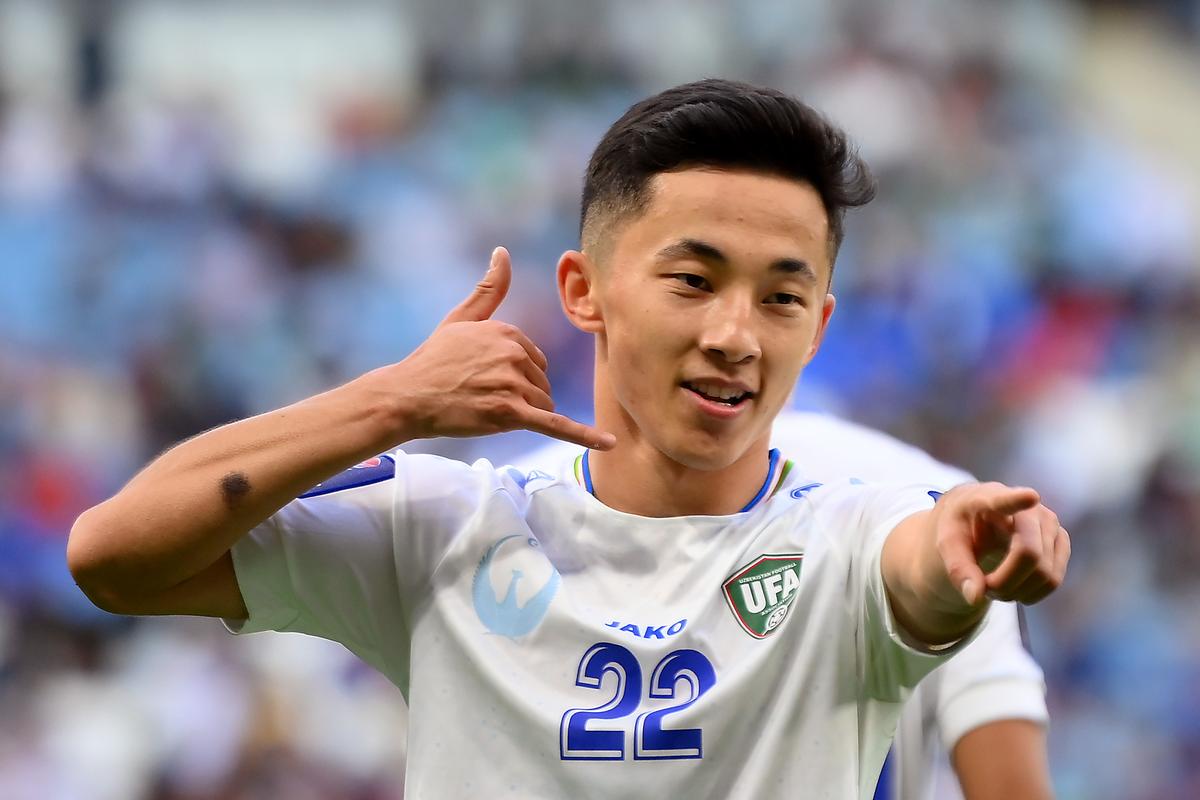
Strategy that works: Abbosbek Fayzullaev of Uzbekistan, which has focused on identifying and honing talent through age-group competitions, leading to a lower reliance on foreigners in their leagues.
| Photo Credit:
Getty Images
Strategy that works: Abbosbek Fayzullaev of Uzbekistan, which has focused on identifying and honing talent through age-group competitions, leading to a lower reliance on foreigners in their leagues.
| Photo Credit:
Getty Images
After routing India 3-0 in the group stage, Uzbekistan’s senior team reached the quarterfinals of the AFC Asian Cup earlier this year.
Following that loss, then-India head coach Igor Stimac underlined the importance of investing in youth development to create a steady assembly line of talent for future generations.
“We need to accept that Uzbekistan is working a lot better with underage groups. They are nearly dominating under-20s and under-18s. They have fantastic generations of players, and that’s why the national team is becoming strong. That’s where we need to speed up in India,” Stimac had said after the match.
Quicksand of problems
All but one ISL team — Hyderabad FC — has its under-21 teams competing in the Reliance Foundation Development League (RFDL), but a set structure for younger age groups is still missing.
The top three teams from the RFDL last season — Punjab FC, East Bengal, and Muthoot FA — played in the Premier League Next Generation Cup this year. However, except for Punjab, the other two teams were thoroughly outplayed by the Premier League under-18 sides, conceding 32 goals over 14 matches and losing all of them.
ALSO READ: India to host Malaysia in November friendly
In the last 20 years, India has qualified neither for the AFC U-20 Asian Cup nor the FIFA U-17 World Cup on merit. The burden of scoring goals for the senior team has primarily been carried by one man, Chhetri, until he retired at 39.
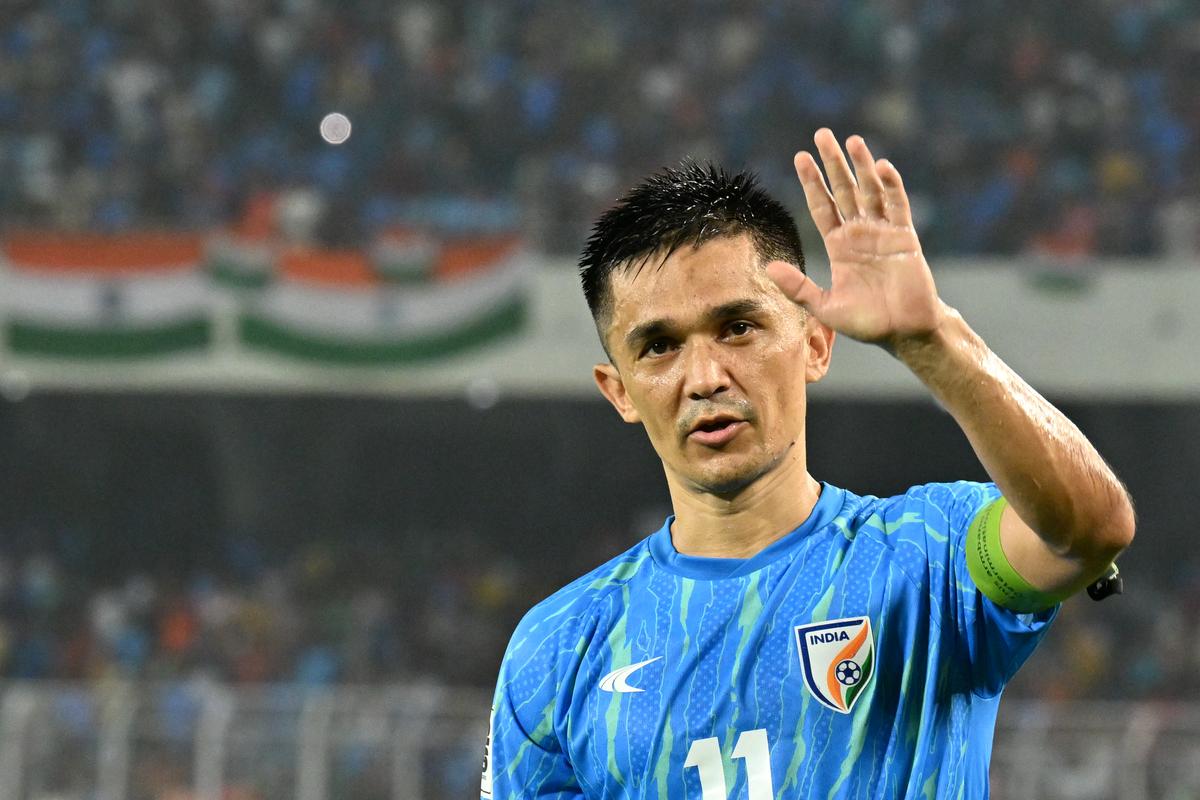
End of an era: Chhetri, the highest goalscorer for India, retired from international football, after a goalless draw with Kuwait in the FIFA World Cup 2026 Qualifiers at the Salt Lake Stadium in Kolkata.
| Photo Credit:
R. V. Moorthy/ The Hindu
End of an era: Chhetri, the highest goalscorer for India, retired from international football, after a goalless draw with Kuwait in the FIFA World Cup 2026 Qualifiers at the Salt Lake Stadium in Kolkata.
| Photo Credit:
R. V. Moorthy/ The Hindu
Yet, some Indian internationals continue to earn salaries higher than the median wages in Japan and South Korea.
According to FootyStats, Pritam Kotal, then captain of Mohun Bagan, earned over Rs 2 crores annually in the 2022-23 season, which was significantly more than the median salary of K1 League in 2021 (1.3 crore).
Gurpreet, on the other hand, earned around Rs 1.77 crores, which was at par or more than at least four J1 League clubs (Consadole Sapporo, Albirex Niigata, Sanfrecce Hiroshima, and Sagan Tosu) in the 2022-23 season.
This raises the question of whether Indian players prioritise high wages over playing competitive football in Asia.
“My feeling is that Indian players are very comfortable. Life is very good for them in the ISL, and it is difficult for them to try and go abroad.”India head coach Manolo Marquez
While money does serve a key role in football development, a lack of appropriate planning would only see the league go down the path of the Chinese Super League — a sudden rise in demand followed by years of mediocrity if corrective measures are not taken in time.
The ISL may no longer aspire to be an IPL-style competition but can still drive Indian football development, provided its resources and funds are used judiciously.




